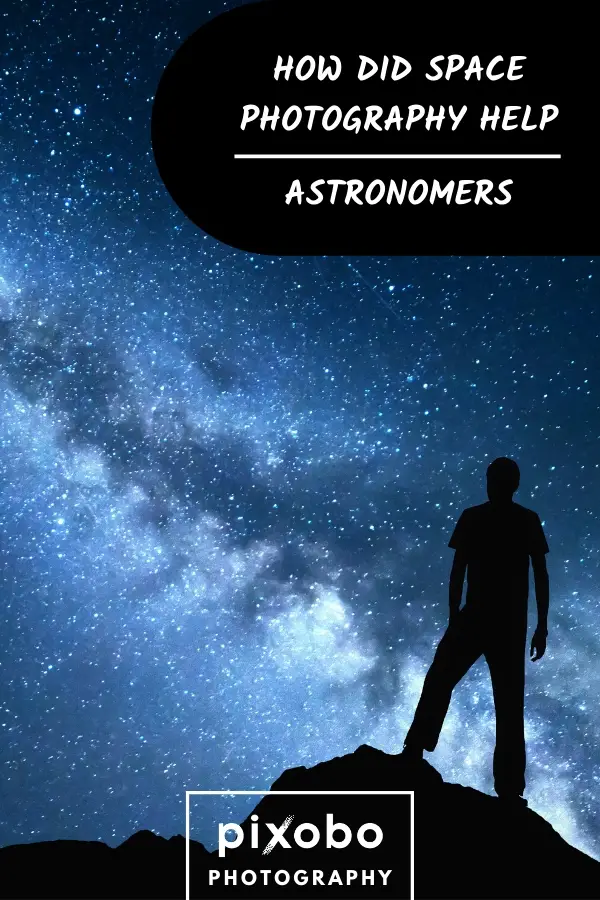The field of astrophotography revolutionized astronomical research by allowing the exposure of celestial events to the human eye in the 19th century. Since then with the progression of technology, space photography has become a serious scientific tool that helps us make other scientifical advances.
How did space photography help astronomers? Space photography is a scientific tool that helps astronomers and scientists to see the universe, astronomical objects and galaxies from different perspectives. With the continuing exploration of astronomical objects, we are slowly unraveling the truth of our existence and confirming or exploring new scientific theories. Space photography is one of the key tools that allow us to expand our understanding of the universe.
The article is designed to explain space photography, its purpose and how space photography helps astronomers. This is certainly an interesting read, especially if you are a student of natural sciences or if you like technology, that is why we urge you to stay with us. Let’s begin!
Table of Content
What is Space Photography?
Space photography is the field in which we can capture the images of astronomical objects, celestial body and events occurring in the space using optical telescopes. This process helps the astronomers to record the hundreds and thousands of stars, nebulae and other astronomical objects that are not visible to the human eye.
With the advancement in technology and with the more sophisticated and precise equipment space photography has gained new momentum. The deep-space photography facilitates the astronomers to analyze the space and to take surveys of the sky.
Purpose of Space Photography
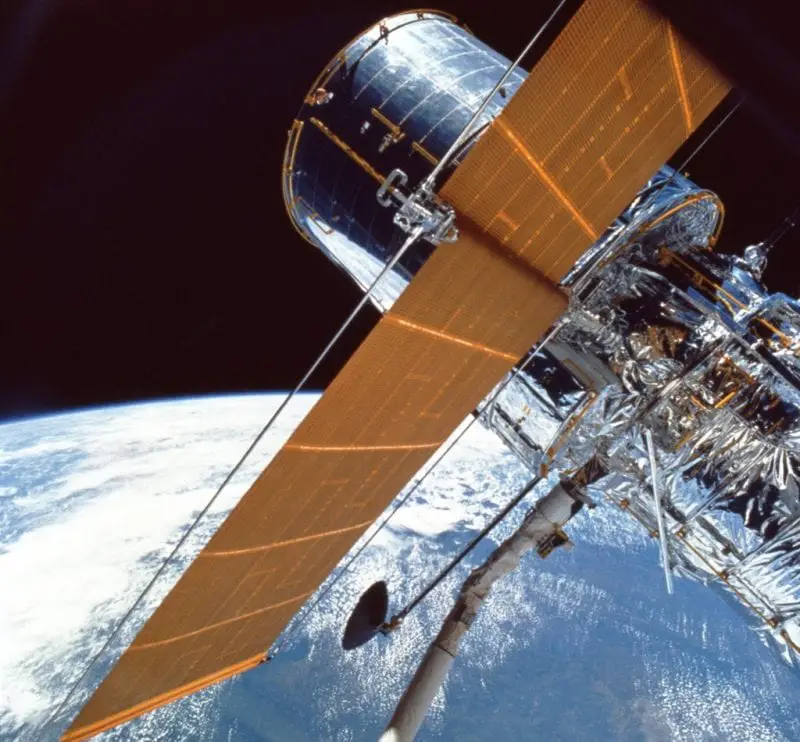
When we take a deeper look at space we get the idea of how strong the human existence is connected with space and how much our survival and the future depends on understanding it.
With the discovery of celestial bodies, we now know about the similarity of the elements in our body and element that are present in space. Space photography allowed us to understand the composition and the fate of our universe.
The exploration of space and the in-depth study of sky costs a lot of time and money for astronomers. Astrophotography is an efficient and reliable method to take a closer look at the space. Researchers had taken a bigger leap because of space photography by doing deep space images of far off places in space.
There are millions of images of space photographs on the internet that the astronomers can use for an extensive study of space/universe.
Space Photography in a Bigger Picture
Space photography is a great tool to find the records of the existence of other galaxies, celestial events and to predict our fate in the universe. The earliest photograph of the moon was taken in 1840. Later, after the advancement of technology detailed images of the moon, sun and planet were recorded.
- Through space photography, we do not only photograph the bigger celestial objects but also now we can see the stars, far away galaxies and nebulae which are invisible to the human eye.
- Space photography helped the astronomers to reveal the position and event of celestial objects, to classify stars and to take a deeper look from a larger frame. It further directed the researchers to find the connection of our existence in the universe and to unravel the knots of obscure pieces of our galaxy and different solar systems.
- Space photography helps to find and learn the unusual changes in the space and their outcomes in the near future.
- All this was made possible through long time exposure (or slow shutter) photography which allows taking a clear and detailed photograph of objects using long-duration shutter speed. Astronomers use optical telescopes to capture the space photographs which provide the key to unlocking our blurred perception of space.
Further, we will explain the fruits and impact of space photography and you will get to know how astrophotography has left a great imprint in human history and on astronomers.
How Did Space Photography Help Astronomers: Interesting Facts
Recently, the image of the ‘granular surface of the sun’ has been released which has provided greater insight about its powerful and dynamic impact of the solar surface on earth. Space imaging facilitated the astronomers to examine the complex and immense sized object.
The places that are still beyond the limit of astronomers can be studied by taking images to further learn about their atmosphere, life support capability and to predict the changes in space and weather.
The modern photographic equipment helps the researcher to know about the temperature, composition and to develop a clear idea of that object.
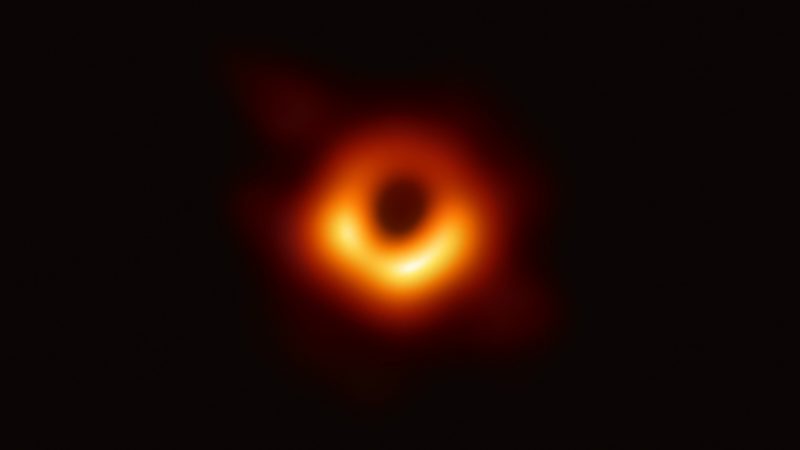
Space photography has helped to discover new exoplanets and astronomical objects. In 2019, for the first time, a team of scientists observed the edge of the black hole called M87. Its mass is billions of times larger than the sun and has infinite density.
An image of a comet was taken through Hubble Space Telescope. The comet was passing through our solar system with a speed of 100,000 miles per hour.
Discovery of thousands of exoplanets and recent exploration of two earth-like exoplanets were made possible through the modern telescope and advanced equipment used in space photography. All of this has made the process of exploration a lot simpler for the astronomers.
What is Deep Space Photography?
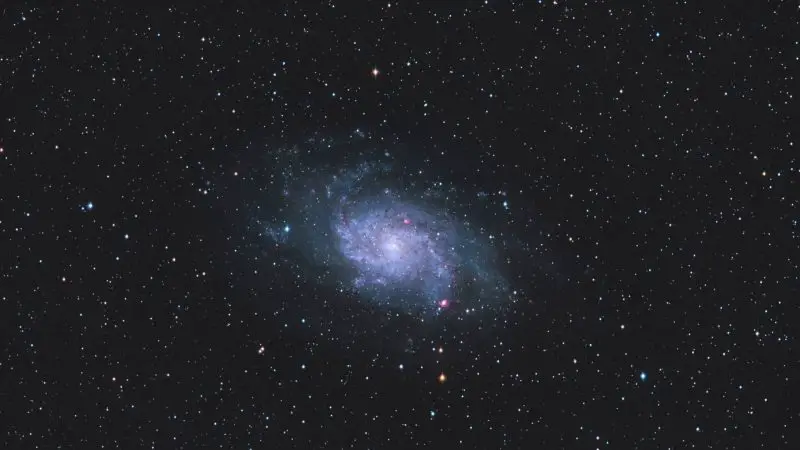
In deep space photography, images of space are taken beyond our solar system using the modern telescope. The images of galaxies, nebulae and other celestial bodies are captured through specialized cameras.
How Are Deep-Space Photographs Taken?
Deep-space photography is not as simple as taking the picture of an object through an ordinary camera. For the best deep-space photograph specialized equipment and powerful computer-controlled telescope are used. Long time exposure photography is the technique to take photographs of distant and dim celestial bodies or astronomical objects.
Images of space are taken with CCD cameras (charged coupled device). Astronomical images usually come in grayscale. Although, the color of images can vary according to the type the telescope. The space images we mostly see in the media are processed on the computer.
Equipment for Deep Space Photography
Deep space photographs are taken using high-tech equipment such as SLR camera, telescope, filters and equatorial mount (operated from PC). The CCD camera helps to maintain the temperature during the long time exposure photography.
The filters are combined to take a clear shot by straining the visible light. Different types of filters can be attached to create a colored space photograph.
It takes time to select the best spot to take the excellent shot of the deep space. The places with light and air pollution are avoided. The timing near the new moon is considered ideal for deep space research. Shots are taken by focusing on the targeted spot. After taking a shot, the photograph is processed or edited on PC by using a software.
What is Amateur Space Photography?
Space photography is popular these days even among photographers. The amateur astronomers or space photographers take images of the night sky. The photograph is taken using a simple digital camera, and a tripod or by combining some devices with a camera.
However, there is also a wide range of high-tech and advanced types of equipment available commercially which are used to take space images.
Tripod
The first step to capture an astronomical shot is to set up the camera on the tripod. The tripod position is fixed at the right spot and lenses are mounted. The shots of the stars, celestial objects or meteors are taken by keeping the exposure time no longer than a minute.
Equatorial Mount
Commercial equatorial mounts or equatorial platform is employed for rotation and to avoid blurred image. Some photographers also use homemade tracking mounts and even homemade amateur telescopes to take space photographs.
Digital Camera or CCD Camera
Amateur astrophotographers use a simple video camera or maybe CCD cameras to take long time exposure images of the sky. The right filters are selected for the camera for good quality and brighter images.
The camera can suffer and get hot and photos can have image noise due to long time exposure but various cooling techniques can be used to resolve the issue. The correct focus and right target define the quality of the image.
Many devices that are available commercially come with the support of long exposure. Certain DSLR cameras that are also relatively cheap also have the ability to capture the long time exposure images (with time-lapse images) of the night sky with reduced image noise.
- Advanced 24.2MP BSI full frame Image Sensor w/ 1.8X readout speed.Aspect Ratio - 3:2, Headphone Terminal : Yes (3.5 mm Stereo minijack), Mic Terminal : Yes (3.5 mm Stereo minijack). Brightness Control (Viewfinder) : Auto/Manual (5 steps between -2 and +2).
- 15 stop dynamic range, 14 bit uncompressed RAW, ISO 50 to 204,800. Compatible with Sony E mount lenses. Can be connected via Bluetooth with smartphones featuring (as of the date of release)- Android (Android 5.0 or later, Bluetooth 4.0 or later), iOS (Bluetooth 4.0 or later)
- Up to 10fps silent or mechanical shutter with AE/AF tracking. Battery life (Still Images): Approx. 610 shots (Viewfinder) / approx. 710 shots (LCD monitor), battery life (Movie, continuous recording): Approx. 200 min (Viewfinder) / Approx. 210 min (LCD monitor)
Image processing software is used to refine or edit the raw image taken from digital cameras. The color and the brightness of the images are adjusted.
How Did Amateur Space Photography Help Astronomers?
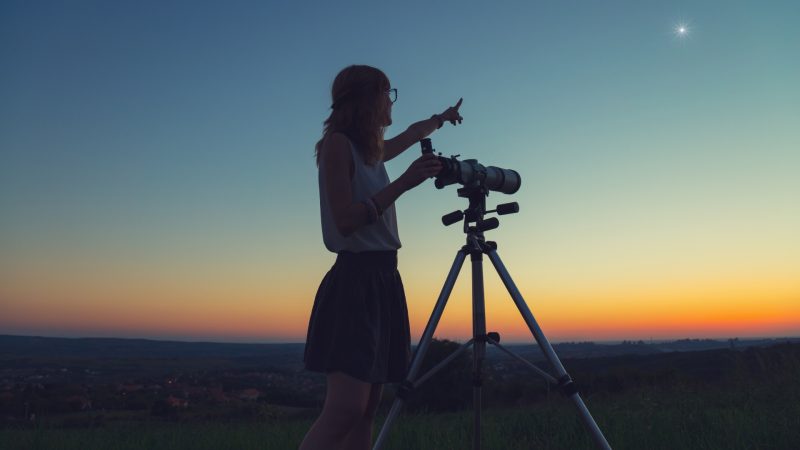
As a universe is a gigantic place and it is difficult for the astronomers to explore all of it. Therefore, the help of amateur space photographers is always needed.
They can make a good contribution by identifying the changes in celestial objects. People in the public can help the astronomers to add more records and images of space photographs for more in-depth astronomical research.
A celestial event was observed by the amateur space photographer in 2009 (in Australia) when Jupiter was hit by an asteroid. In another observation, a group of 16 middle school students found a cave on Mars during participation in the Mars Student Imaging Project.
There are a number of contributions that were made by amateur space photographers which helped the astronomers to identify the changes and the presence of celestial bodies. NASA often recruits students and volunteers for different space projects to encourage amateur astronomers to explore the hidden parts of space.
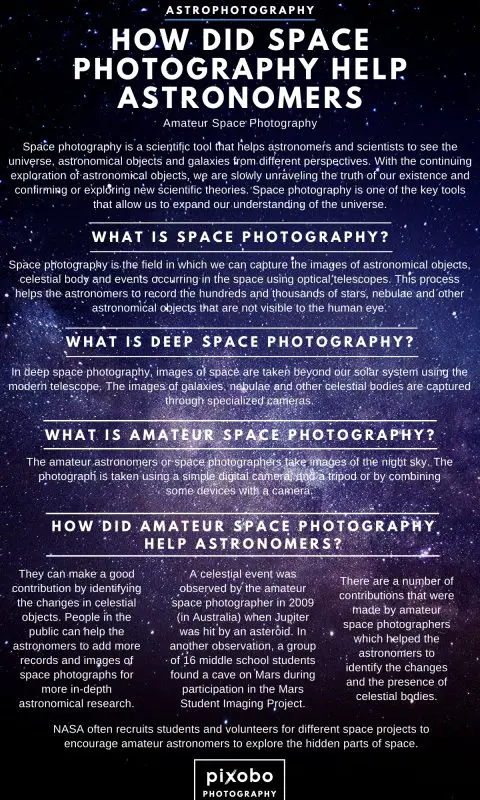
Summary
In space photography, images of astronomical objects like nebulae or galaxies are taken using the telescope. The space photography helped the astronomers to discover the new astronomical bodies and exo-planets. All of this has made easier for the astronomers to analyze the changes in celestial events, composition, surface, temperature and other features of astronomical objects.
This helps to develop an idea about the beginning and the fate of the universe. The dynamic changes in the celestial event can be helpful to predict the conditions and changes in our solar system in the future.
Deep space photography is used to take the deep-space images from far away systems. With the help of high tech telescopes and CCD cameras, astronomers take images of space by using long time exposure.
Amateur space photography can play a constructive role in uncovering and exploring the hidden secrets of space and astronomical bodies. Space photography is a cost-effective and efficient method to explore the distant places in the space and to predict future celestial events.
If you liked our article please follow us and share it with others!
List of sources
Vanderbei, R. J., The Amateur Astrophotographer, Princeton University, 2003.
Covington, M. A., Astrophotography for the Amateur, Cambridge University Press, 1999.
Lutz, O., How Scientists Captured the First Image of a Black Hole, NASA, 2019.
Kessler, C., Simple Astrophotography, University Lowbrow Astronomers, 2001.
Adam P., Space Photography, NASA Visualization Explorer, 2015.
